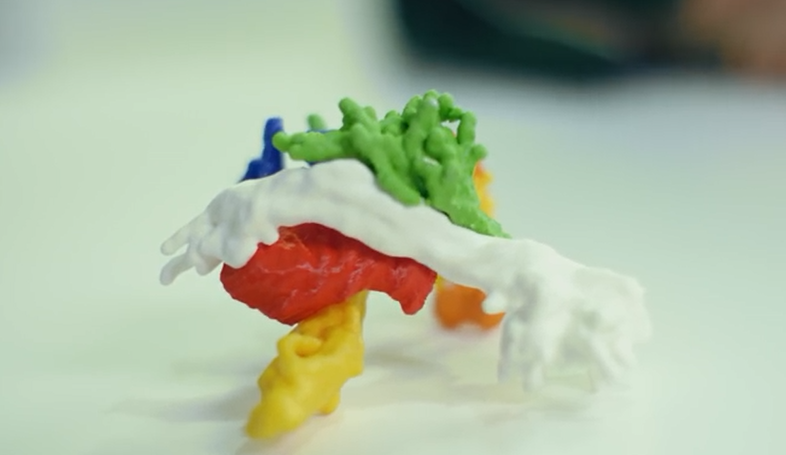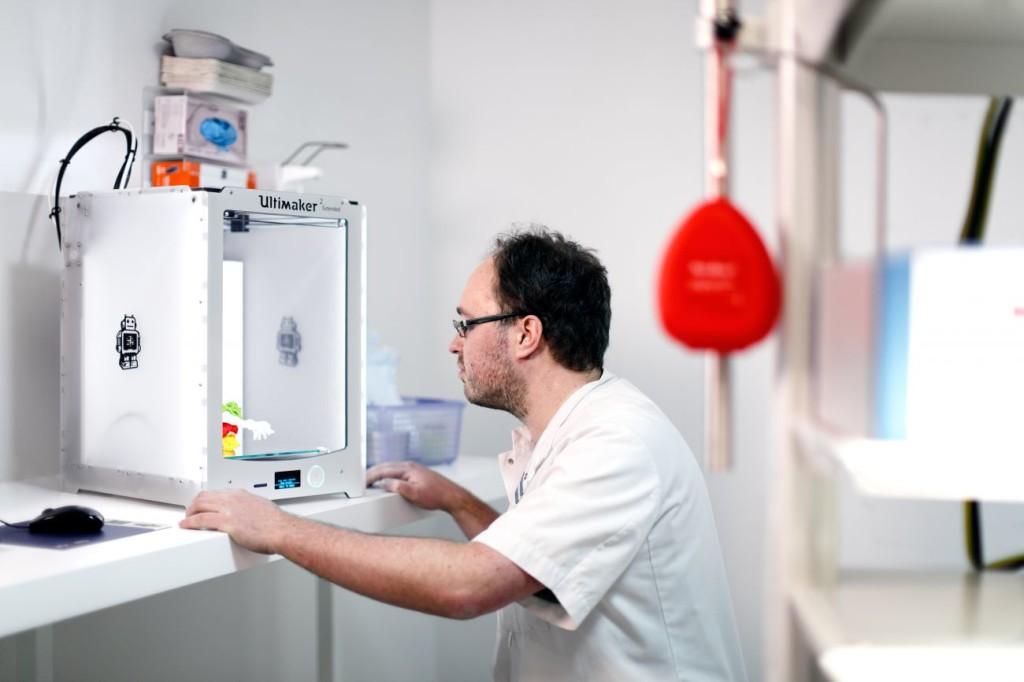The brain is perhaps the most complicated bodily organ to conduct surgery on, because of both how dense the tissue is and how uniquely formed each individual’s brain is. Also, if something goes wrong during brain surgery, it can affect so many other physical functions. You may have heard the common phrase “It isn’t brain surgery,” if you’re worried about something you shouldn’t be; it’s brain surgery you should worry about. For that reason, this is exactly the medical area that can utilize new technological support from 3D printing — as it becomes easier to make 3D models out of 2D medical scans like MRIs or CT scans.
3D printed medical models help both doctors and patients prepare for complex surgeries by providing exact replicas of patients’ body parts. With a consideration for the patients’ comfort-levels central, the Netherlands’ Radboud University Medical Center has been working on an alternative to the usual MRI or CT scans used to diagnose and treat brain tumors. These models make it easier for doctors to explain serious medical conditions to patients. Radiological (x-ray) images are difficult to work off of, and even more difficult to use to explain a procedure to a patient. That is where medical models come in: derived from the MRI scans, medical models can help make a condition and procedure literally more tangible for patients.
David Grim is the project leader at Radboud Hospital’s REshape & Innovation Center, and he leads the effort to take CT scans and MRIs and turn them into 3D models. Grim recommends the Ultimaker 2 Extended 3D printer for his brain tumor models, because he believes that it is user-friendly and inexpensive to use. Any doctor can learn to use these 3D printers– after all, it isn’t brain surgery! As explains in the video seen below, most of the Center’s 3D prints are oncological, and focused on cancerous brain tumors.
From looking at the models, you can already see how useful they can be. They are scaled to size of the portion of the brain being operated on, and different parts are presented in different colors, making it much easier to explain where a part is or where exactly the problem lies.
All of this makes great sense, and is going in the direction of favoring 3D printed medical models in complex procedures. Doctors also benefit from these models, as they allow them to become familiar with the size, shape, scale and part of the brain to be operated on. It looks as if something positive, such as enhanced doctor and patient communication, can come out of a difficult situation after all. Let’s hear your thoughts for this 3D Printing application in the 3D Printed Brian Tumors forum on 3DPB.com.
Subscribe to Our Email Newsletter
Stay up-to-date on all the latest news from the 3D printing industry and receive information and offers from third party vendors.
You May Also Like
3D Printing Unpeeled: New Arkema Material for HP, Saddle and Macro MEMS
A new Arkema material for MJF is said to reduce costs per part by up to 25% and have an 85% reusability ratio. HP 3D HR PA 12 S has been...
3D Printing News Briefs, January 20, 2024: FDM, LPBF, Underwater 3D Printer, Racing, & More
We’re starting off with a process certification in today’s 3D Printing News Briefs, and then moving on to research about solute trapping, laser powder bed fusion, and then moving on...
3D Printing Webinar and Event Roundup: December 3, 2023
We’ve got plenty of events and webinars coming up for you this week! Quickparts is having a Manufacturing Roadshow, America Makes is holding a Member Town Hall, Stratafest makes two...
Formnext 2023 Day Three: Slam Dunk
I’m high—high on trade show. I’ve met numerous new faces and reconnected with old friends, creating an absolutely wonderful atmosphere. The excitement is palpable over several emerging developments. The high...

































